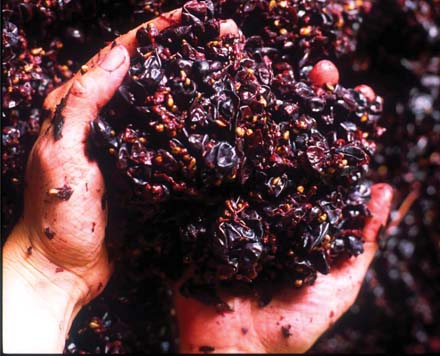With technology advancing more rapidly than ever, robotics and automation in the restaurant industry are increasingly changing how these businesses operate.
How Boilermaker Made It To Upscale Cocktail Menus
As with most classic cocktail names, no one is really sure when the term “boilermaker” was first used or exactly what was originally served. In the workplace today, the name is associated with the trade union that represents blacksmiths, shipbuilders and a variety of welders and iron workers. The Oxford English Dictionary puts the origin of the word as a term specifically for steam engine builders first used sometime in the 1830s. So it’s appropriate that, throughout its history, the pairing of a strong shot of hard alcohol with a cold beer has always been associated with the working class.
![]() That is, until recently, when it’s suddenly become the darling of any number of upscale (some might use the term “hipster”) drinking venues in the world’s trendiest cities, the patrons of which are unlikely to have work-calloused hands or come in at the end of the day covered in soot.
That is, until recently, when it’s suddenly become the darling of any number of upscale (some might use the term “hipster”) drinking venues in the world’s trendiest cities, the patrons of which are unlikely to have work-calloused hands or come in at the end of the day covered in soot.
While the traditional dive bar boilermaker was cheap whiskey or bourbon paired with a PBR or Bud, this new incarnation is more likely to be Sazerac or Four Roses paired with a craft beer. It’s also more likely to run for much closer to $10 than any dive bar Boilermaker ever has.
The first evidence of the term “boilermaker” being used for the whiskey-beer pairing comes from British pub menus in the early 1900s.
How did we get from there to here? The beginning of the story is the most unclear part. The first attempts at distilling grain into what would eventually become whiskey began roughly 800 years ago, in the waning days of the medieval period in Europe. At the time, what they distilled was potent, but tasted absolutely nasty. So this is the likely origin of chasing whiskey with a beer to cleanse the palate.
Though it’s widely thought of as an American drink, the first evidence of the term “boilermaker” being used for the whiskey-beer pairing comes from British pub menus in the early 1900s. There was a long history throughout Europe of chasing a hard alcohol with a beer, but the practice was extremely uncommon in the United States until immigrants in the 1800s brought it over with them.
It’s unclear where the name “boilermaker” actually first appeared in the United States, but we do know that by the 1940s it was commonly seen on the menus at bars all around the country.
The “slam then drink” approach is widely regarded as the original method, though there’s no real evidence to prove this.
![]() The traditional method of drinking is also a subject that is not historically verified and is still very much up for debate. There are three approaches to drinking a boilermaker: slam the shot first then drink the beer, chase sips of the shot with sips of the beer, or drop the shot glass entirely into the beer so that the two liquids mix. The lattermost of these methods was known to be practiced in British pubs in the 1600s, though under a variety of different names such as the “Pop-In.”
The traditional method of drinking is also a subject that is not historically verified and is still very much up for debate. There are three approaches to drinking a boilermaker: slam the shot first then drink the beer, chase sips of the shot with sips of the beer, or drop the shot glass entirely into the beer so that the two liquids mix. The lattermost of these methods was known to be practiced in British pubs in the 1600s, though under a variety of different names such as the “Pop-In.”
Modern bartenders will often call this a “depth charge” so that there is no confusion over what is being ordered. The “slam then drink” approach is widely regarded as the original method, though there’s no real evidence to prove this.
Boilermaker makes the upscale bar a more accessible place for those who don’t have the time to plumb the depths of the craft cocktail.
The only thing that is certain is that whiskey aficionados are cringing at the prospect of any of these options being perpetrated on anything better than a Jameson!
That’s the central point of the Boilermaker, however, and why it’s made a comeback in the most unlikely of places. It makes the upscale bar a more accessible place for those who don’t have the time or inclination to plumb the depths of the craft cocktail or Scotch scenes. It also represents a growing sense of embracing working-class roots in such venues, even if the price point is now at a level that the average working-class patron can’t afford.
You might also like…
Robotics and Automation in the Restaurant Industry
Sirvo Says: Elevated Dining in Denver & Boulder
If you’re looking for a place to splurge on a meal, Denver and Boulder definitely have some amazing options to choose from. Here are a few of our faves!
Sirvo Says: How to Spend Less and Make More in Denver
Denver is a fast growing city and there is a ton here to experience, but you have to do it right. Here are a few suggestions on how to afford this city.



